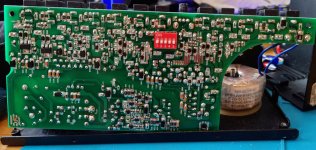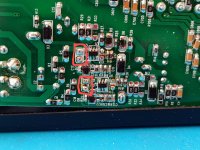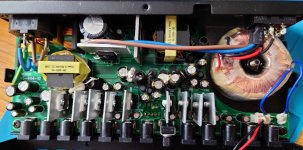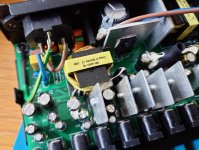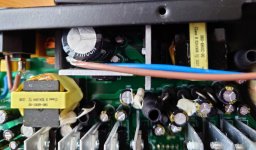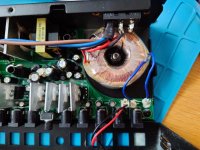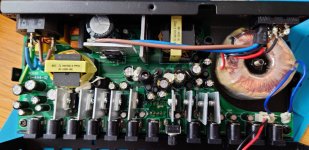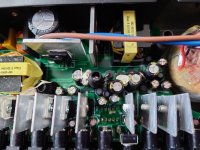Fama
Well-known member
I was using my huge pedalboard a little ago and suddenly it started malfunctioning. Just a slow motorboating type sound, some pedals not lighting up, smelled like burning. I finally got around to troubleshooting in more detail, and it looks like my Truetone 1Spot CS12 is broken.
To be more accurate, the changeable 9V/12V outputs are outputting less than 1V each in either mode. Same with the 18V outputs on that same side. The other outputs seem to work fine, although I only tested them one by one with a multimeter and not under load.
What do you think, is it worth opening it up and trying to fix it? Obviously it has 230V running into it, and I wouldn't plug it in while the case is open, but I'm feeling a bit iffy about doing DIY repairs on it.
I bought it used over a year ago, and the date code seems to say it's from 2015 originally, so no chances of warranty.
Edit: I popped it open, each output has it's own voltage regulator (or at least I assume that's what they are, huge heat sinks). I doubt 6 of those just broke at the same time, but I can't see where there could be a split between either side (first 6 do not work, the other 6 presumably work, I didn't test the AC but the other 5 work), or if they are somehow partially chained and the issue could be where the chain is. A ton of caps and diodes, no visible signs of problems.
To be more accurate, the changeable 9V/12V outputs are outputting less than 1V each in either mode. Same with the 18V outputs on that same side. The other outputs seem to work fine, although I only tested them one by one with a multimeter and not under load.
What do you think, is it worth opening it up and trying to fix it? Obviously it has 230V running into it, and I wouldn't plug it in while the case is open, but I'm feeling a bit iffy about doing DIY repairs on it.
I bought it used over a year ago, and the date code seems to say it's from 2015 originally, so no chances of warranty.
Edit: I popped it open, each output has it's own voltage regulator (or at least I assume that's what they are, huge heat sinks). I doubt 6 of those just broke at the same time, but I can't see where there could be a split between either side (first 6 do not work, the other 6 presumably work, I didn't test the AC but the other 5 work), or if they are somehow partially chained and the issue could be where the chain is. A ton of caps and diodes, no visible signs of problems.
Last edited:


